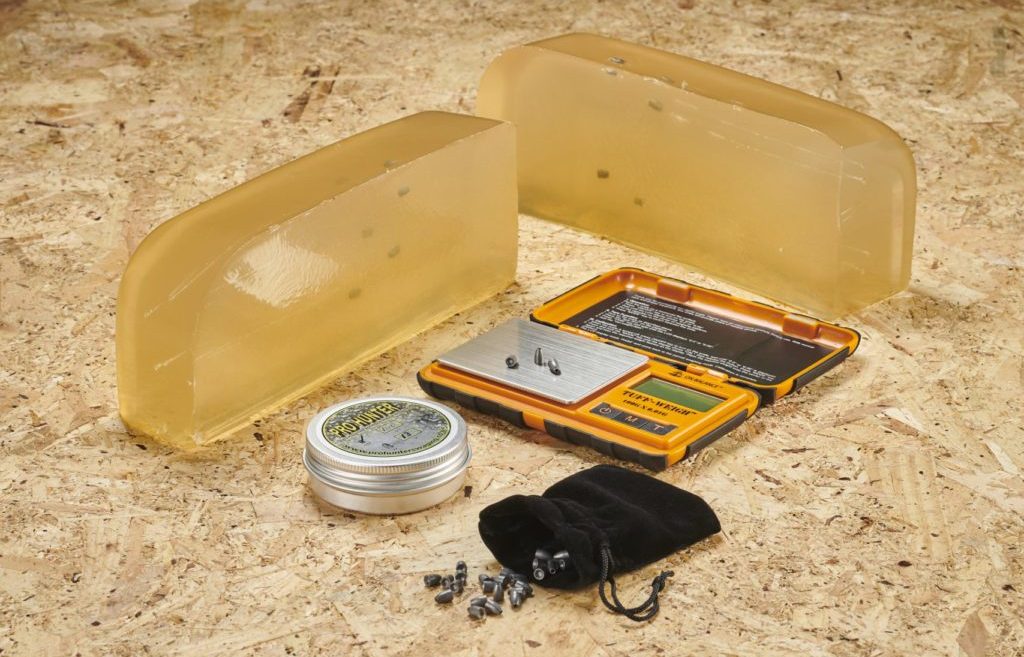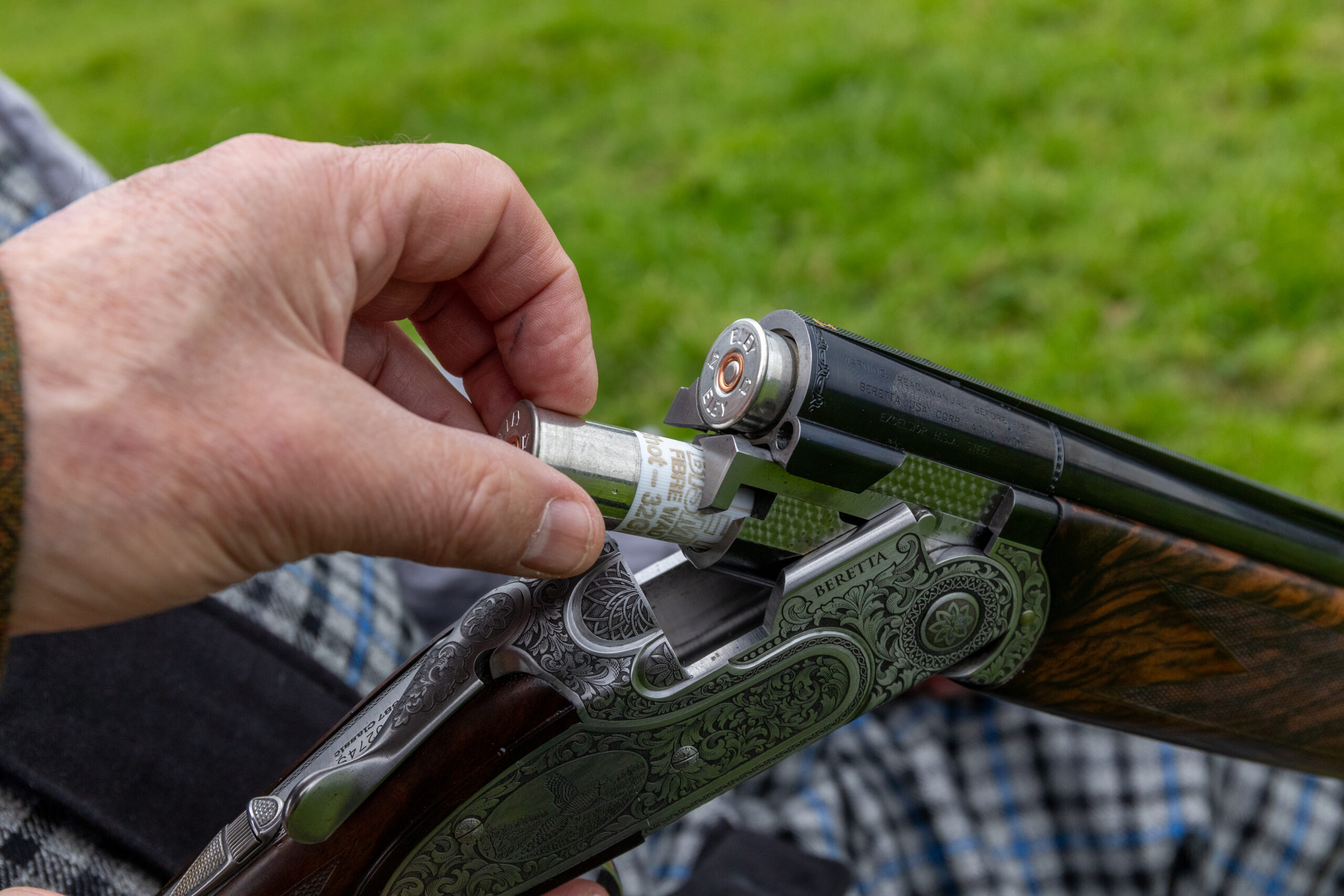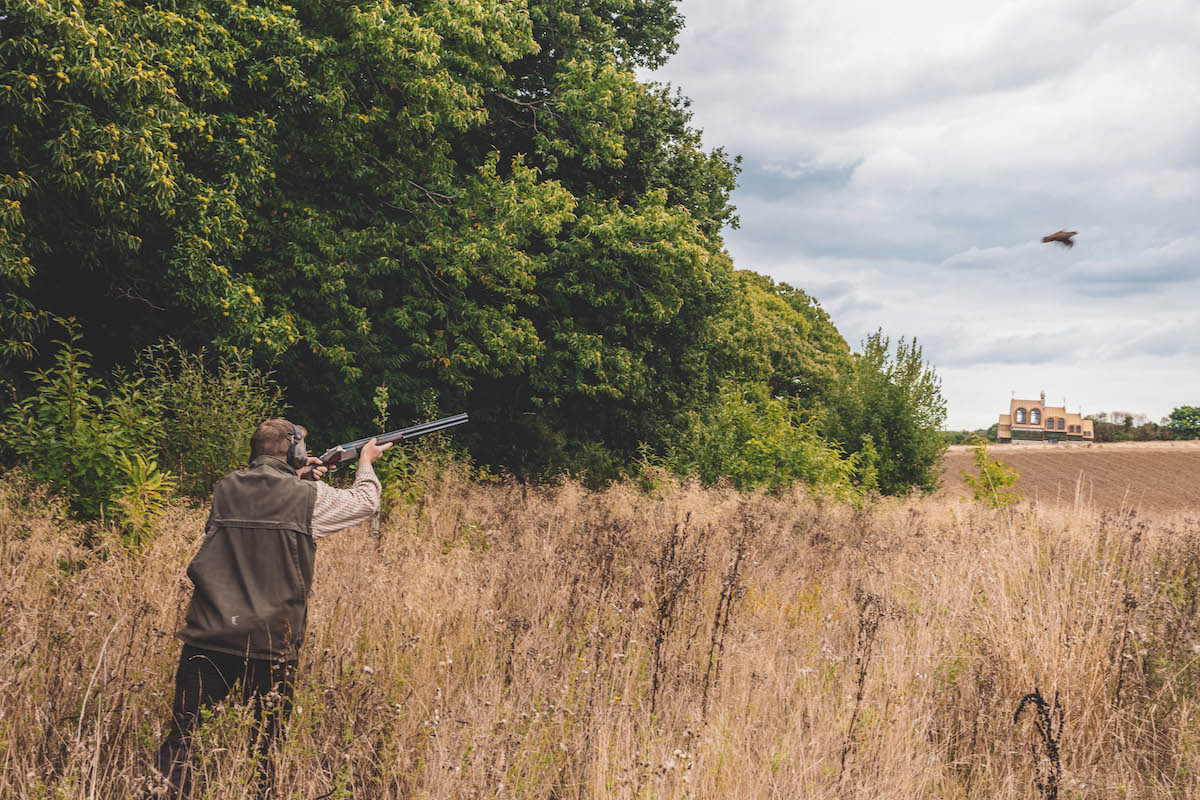Can you shoot heavyweight slugs in a legal-limit air rifle?
Mike Morton attempts the unthinkable – shooting heavyweight slugs through a legal-limit air rifle equipped with a regular barrel in .177 calibre

Before we answer the question of heavy slugs in a legal-limit air rifle, we need to consider slugs themselves. While air rifle slugs have been around for quite a few years, they seem to have enjoyed a massive boost in popularity recently, possibly because there seems to be a corresponding increase in popularity in the number of air rifles operating at FAC levels.
And while it was the norm not that long ago to have an FAC rifle running anywhere from 26 to 30 foot pounds in .22, there’s now a staggering choice of power levels and calibre options, with air rifles with a muzzle energy of 80 foot pounds or even higher no longer being unusual.
Mat Manning and Roger Lait have already reported their findings in Airgun Shooter after testing slugs in their FAC rifles, and I decided to carry out some testing of my own – but with a twist. I chose to shoot some slugs in a regular sub-12 foot pound rifle – and in .177 calibre as well.
I thought it would be interesting to see whether the benefits offered by slugs would still be present at this lower power level. And I was hoping that whatever my findings might be, the results would upscale well to the larger calibres and higher muzzle velocities enjoyed by shooters of FAC air.
(Interested in airgun slugs? Check out our list of the best airgun slugs to consider buying).
What Are Slugs?
Air rifle slugs differ from airgun pellets in a number of ways, the most obvious being their shape and weight, which influence their ballistic coefficient. With slugs, the traditional diabolo shape used to manufacture a pellet has been cast aside, with the slug more closely resembling a bullet, as this has a better ballistic coefficient, or BC.

Pro Hunter Swaging slugs arrive inside a little jewellery bag that’s been placed in a protective tin
The ballistic coefficient of a projectile is a measure of its ability to overcome air resistance, with a bullet having a better BC than a pellet. While there is no such thing as a ‘universal’ bullet, accurate rifle bullets typically have a small meplat (tip) and a boat tail shape to minimise drag and improve their BC. Heavier projectiles of a similar shape tend to have a better BC as well. (Read more about ballistic coefficient in our advice on how to choose the right pellet for your airgun).
Waisted diabolo pellets have a relatively poor BC, but they look the way they do with good reason as the diabolo is the most efficient shape for a projectile fired from a rifled barrel at legal-limit power levels.
But the advantages of a higher BC are more retained energy over distance and a flatter trajectory. That’s relatively easy to achieve with a high muzzle velocity, but part of this test was to see whether slugs would still retain that energy when launched at a lower-than-optimum velocity.
Test Criteria
The slugs I’d be shooting were supplied by Pro Hunter Swaging, a British company that produces lead air rifle slugs in .177, .22, .25 and .30 calibres, with a choice of weights and hollow point head types within each calibre.
For my testing I was sent three types of slug in .177 calibre – one batch of slugs weighing 13 grains and two weighing 15 grains that were of slightly different shapes and were marked ‘A’ and ‘B’ respectively. It was going to be interesting to see whether weight or shape would be the most important factor, or a combination of the two.

Line-up (L-R) of unshot Rangemaster Sovereign pellet, 13 Grain slug, 15 Grain Type A slug and 15 Grain Type B slug
The idea was to test muzzle velocity and muzzle energy, then check to see how they performed at 30 yards in terms of retained velocity and energy, and what happened when they were shot into a block of ballistic gel.
Slugs made by Pro Hunter Swaging are designed for the airgun hunter, and so I wanted to shoot the slugs into the gel to determine their terminal ballistic properties – how quickly and cleanly they could kill a quarry animal.
First Impressions
Pro Hunter Swaging is run by husband and wife team Graham and Yvonne, who have more than 40 years of shooting experience. They point out that their slugs are hand-swaged rather than mass-produced, and are checked for quality.
Their slugs are supplied in a little jewellery bag that has been placed inside a tin. This attention to detail is more than aesthetic, as it ensures the slugs arrive in perfect condition.
Another thing I really appreciated was the inclusion of a slip of paper that informs the shooter that the slugs have been pre-washed and benefit from a coating of lube. The slugs were impeccably produced and were beautifully clean, and after I weighed them I gave them a light coat of Napier Power Pellet Lube as suggested.
Weighty Matters
Just like my regular tests, I weighed a sample of 50 slugs from each of the three types. I was off to an excellent start with the 13 Grain Slugs, as all 50 weighed 13.2 grains.
Of the 15 Grain Type A Slugs, 29 slugs weighed 15.0 grains and 21 slugs weighed 15.2 grains, and I used the 15.0 grain ones from this sample for my further testing.
Out of the 15 Grain Type B Slugs, 47 slugs weighed 15.0 grains, while three slugs weighed 15.2 grains, and again I used the 15.0 grain ones for the upcoming shooting tests.
Velocity, Energy And Accuracy
I used my Daystate Red Wolf for this test, equipped with an MTC King Cobra F1 scope, with the rifle being shot off Dog-Gone-Good bench bags. Before shooting any of the slugs I wanted to establish a baseline, so cleaned the bore, re-leaded the barrel and checked the muzzle velocity with Rangemaster Sovereign pellets.
With these pellets, which according to my scales weighed 8.6 grains, the Red Wolf had a muzzle velocity of 758.8 feet per second, giving a muzzle energy 11.0 foot pounds.

All testing was carried out with a Daystate Red Wolf, a rifle that’s known for being unfussy when it comes to choice of ammo
The bore was then cleaned again and re-leaded, this time with the 13 Grain Slugs, and I found the rifle began shooting consistently after using just five slugs for the leading-in process.
Over my Shooting Chrony F1, they had an average muzzle velocity of 537.4 feet per second, with a variation of 4.9 feet per second over a five-shot string, and a muzzle energy 8.47 foot pounds. I shot several five-shot groups at 30 yards, the best group size being 8mm, with an average group size of 13mm, well below the 18mm diameter of a five pence piece.
After cleaning and re-leading the bore with the 15 Grain Type A Slugs, this ammo was displaying a muzzle velocity of 446.8 feet per second, with a variation of 5.5 feet per second over a five-shot string, and a muzzle energy of 6.65 foot pounds. The best five-shot group measured 17mm at 30 yards, with the average group size measuring the same.
Having cleaned and re-leaded the bore a final time, the 15 Grain Type B Slugs were being thrown over the chrono at 431.9 feet per second, with a variation of 2.3 feet per second over a five-shot string, yielding a muzzle energy 6.21 foot pounds. The best group size at 30 yards was 11mm, while the average group measured 16mm.
Retained Energy At 30 Yards
As a projectile flies through the air, it will slow down due to encountering air resistance, and while its mass remains the same its energy will deteriorate over distance. More retained energy means a better flightpath and a greater potential transfer of energy into the quarry animal. More retained energy is better.
Freestanding chronographs like the Chrony F1 are useful for measuring velocity, and hence retained energy, as they can be set out at distances away from the firing point, in this case 30 yards.
I began this phase of the test with Rangemaster Sovereign pellets, again to set a baseline, with the pellets’ velocity now reduced to 635.0 feet per second, equating to 7.70 foot pounds of retained energy, which works out as being 84% of muzzle energy.
The velocity of the 13 Grain Slugs was down to 494.2 feet per second, working out to a retained energy of 7.15 foot pounds and an impressive 92% of retained energy.
The 15 Grain Type A Slugs slowed down to 381.4 feet per second at 30 yards, energy now being 4.84 foot pounds, representing an 85% retention rate. The velocity of the 15 Grain Type B Slugs was down to 402.4 feet per second, with a retained energy of 5.38 foot pounds, this figure representing a best-of-test 93% retention of the starting muzzle energy.
13 Grain Slugs
Weight(s): 50 x 13.2 grains
Average velocity: 537.4 feet per second
Variation: 4.9 feet per second over a five-shot string
Muzzle energy: 8.47 foot pounds
Best group size at 30 yards: 8mm
Average group size at 30 yards: 13mm
Average depth of penetration into ballistic gel at 30 yards: 157mm
Retained energy at 30 yards: 494.2 feet per second / 7.15 foot pounds
Percentage retained energy at 30 yards: 92%
15 Grain Type A Slugs
Weight(s): 29 x 15.0 grains, 21 x 15.2 grains
Average velocity 446.8 feet per second
Variation: 5.5 feet per second over a five-shot string
Muzzle energy: 6.65 foot pounds
Best group size at 30 yards: 17mm
Average group size at 30 yards: 17mm
Average depth of penetration into ballistic gel at 30 yards: 131mm
Retained energy at 30 yards: 381.4 feet per second / 4.84 foot pounds
Percentage retained energy at 30 yards: 85%
15 Grain Type B Slugs
Weight(s): 47 x 15.0 grains, 3 x 15.2 grains
Average velocity: 431.9 feet per second
Variation: 2.3 feet per second over a five-shot string
Muzzle energy: 6.21 foot pounds
Best group size at 30 yards: 11mm
Average group size at 30 yards: 16mm
Average depth of penetration into ballistic gel at 30 yards: 158mm
Retained energy at 30 yards: 402.4 feet per second / 5.38 foot pounds
Percentage retained energy at 30 yards: 93%
Terminal Ballistics
In order to find out what might happen when the slugs hit a living target, I shot them into ballistic gel. This is a testing medium that is designed to replicate muscle tissue, and while it’s intended for bullets, it works perfectly well for slugs and pellets too.
Ballistic gel is a stabiliser derived from animal collagen that can easily be made at home, but needs to be stored at around five degrees centigrade for it to maintain the correct density.

Mike repeated the ballistic gel test four times, and every slug tumbled inside the gel, much like a military 5.56mm bullet does on hitting its target
I made four blocks of ballistic gel, shooting a Rangemaster Sovereign pellet plus each of the three different types of slug into each of them. The results were consistent across all four of these blocks of gel and were very enlightening.
The pellets travelled into each block of gel by an average of 140mm before coming to a complete halt, while the 13 Grain Slugs penetrated 157mm, the 15 Grain Type A Slugs went 131mm and the 15 Grain Type B Slugs travelled 158mm.
While these results may look similar, the slugs all did one very important thing the pellets did not – they tumbled. In every case, the slugs ended up facing back to front after hitting the gel and travelling a short distance through it.
A projectile that tumbles on impact with a quarry animal will produce a devastating wound, leading to a more instantaneous and more humane death, and although the gel doesn’t take account of bone, performance like this on a rabbit or squirrel would mean an extremely ethical dispatch.
Lessons Learned
While airgun slugs are traditionally used in high-power air rifles, it was interesting to see that these slugs displayed the same properties they are known for when shot out of a rifle with a muzzle energy of less than 12 foot pounds, particularly the percentage of retained energy at range.
And while the pellets entered the ballistic gel with more energy than the slugs, it was the slugs that generally travelled slightly further and did more damage.
A couple of other things emerged during some follow-up testing: the bore did not noticeably lead up any more with slugs than regular pellets, despite the surface area coming into contact with the bore being far greater. And it was also possible to switch between slugs and pellets without cleaning the bore without any loss in accuracy in either projectile.
It would be great to repeat this test with an FAC-rated rifle to see whether the percentage of retained energy varies and whether the slugs would make more than a 180 degree rotation when tumbling through the gel.
But even when shot at legal-limit levels these slugs from Pro Hunter Swaging are not only beautifully made, but potentially devastating for field use.
Follow our guide below…
1: THE INGREDIENTS: In order to make your gel, you’ll need the powder itself, some cinnamon leaf oil, a set of scales to weigh the powder, a measuring jug for the water, a whisk and a mould to pour it into.

2. GET THE RIGHT PROPORTIONS: The key to making good gel is the ratio, which is 1kg of powder to 9 litres of water. On a small-scale level, this equates to 111g of powder to 1 litre of water, so you’ll need a means to measure out both. I used a 1.5 litre mould for each batch of my gel, so in my case needed 167g of powder.

3. IT’S ALL IN THE MIX: It’s important to add the powder to the water a little at a time, stirring continuously as you go. Any clumps of gel that won’t dissolve need to be removed. You can stir the mixture with a hand whisk or an electric mixer. Going electric is much faster, but will generate more bubbles. Add a few drops of cinnamon leaf oil to dissipate the bubbles. If you leave the bubbles there, the trapped air will leave holes in the gel when it solidifies.

4. COOLING DOWN: When the gel has been thoroughly stirred and allowed to cool, the pot can be transferred to the fridge for a couple of hours where it will solidify. The gel needs to ‘bloom’ – to uniformly absorb all the water – and once it’s set it needs to be melted down again and reset in order to attain the proper consistency.

5. MOULD YOUR OWN: Once the gel’s been turned back into a liquid it can be poured into a mould; I used a couple of plastic kitchen containers. It then needs to be returned to the fridge and left to set again – this time for a whole 12 hours – for it to properly solidify.

6. ONE SLICE OR TWO: I was able to pop the gel straight out of the mould as the plastic was flexible, but you may want to line yours with cling film if you use a rigid mould so that you can remove your finished block more easily. Alternatively, you could coat your mould with some cooking spray. The ballistic gel can now either be shot as is, or sliced into smaller blocks with a sharp knife. Length is more important than width, as your pellets or slugs will probably travel further through the gel than you expect!











